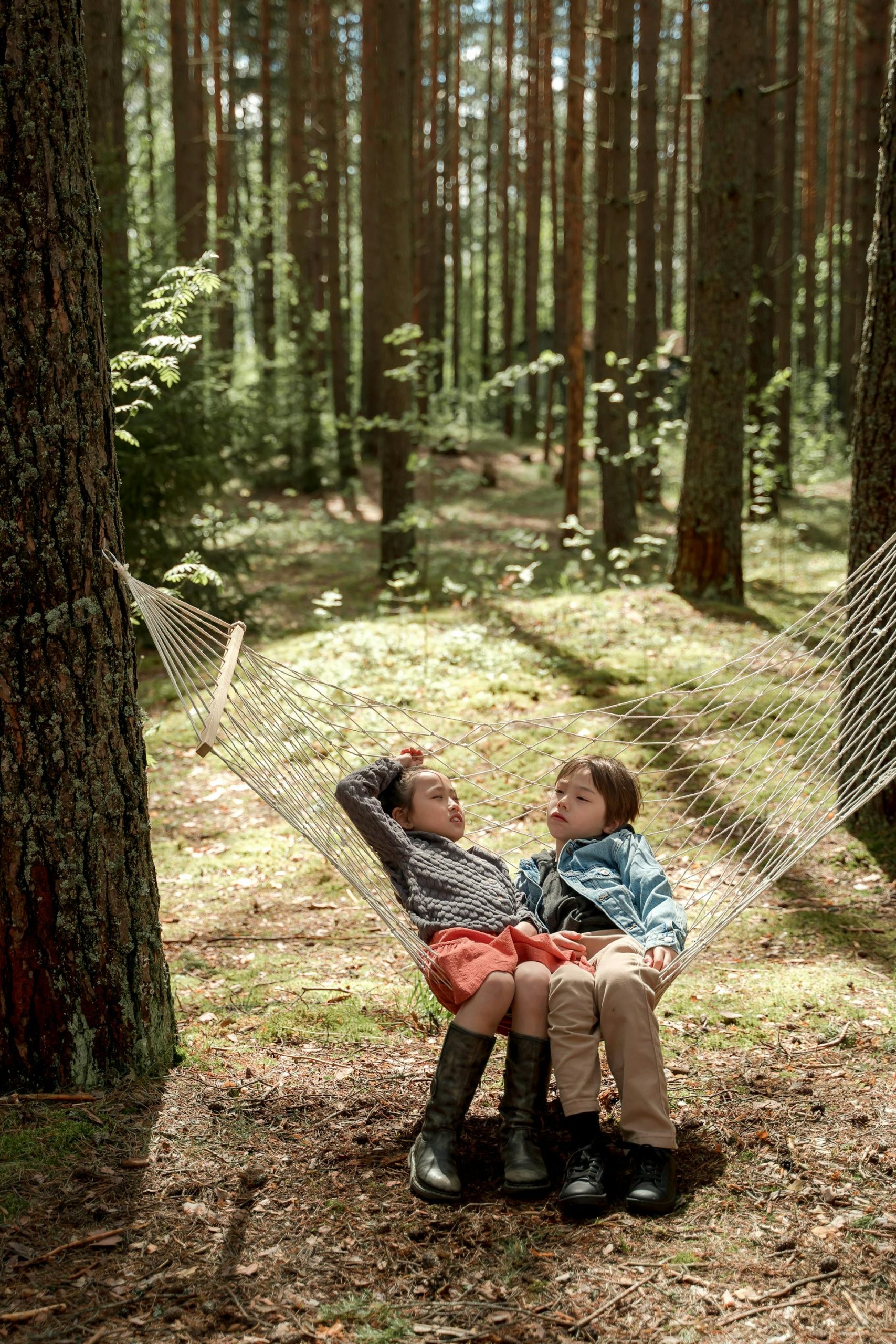Last Updated on October 30, 2025 by teamobn
While raising or working with children who have ADHD or are on the autism spectrum can be challenging, it can also be incredibly rewarding. After all, these kids are creative, curious, and full of energy!
But if they are to thrive, it’s important to build environments that feel safe, calm, and predictable.
These safe spaces are, of course, about physical safety. Yet they also support their emotional well-being, can reduce stress, and also encourage them to behave better.
Whether it is at home, in school, or in public, creating the right environment can make a world of difference. This post will explore why they are so important for children with ADHD and Autism, and what you can do, in real terms, to cultivate one.
Contents
Why Physical Comfort Matters
Children with ADHD and autism often experience the world in ways that are more intense than others. For instance, they may be more sensitive to lights, noise, textures, or even smells.
This is where a sensory-friendly space can help. These environments are designed to reduce sensory overload. That might mean they have softer lighting, quiet zones, calming colours, or low-stimulation furniture.
It can also include designated corners where a child can retreat when they feel overwhelmed. One simple addition to a calming space is a mental health armchair. This specific piece of furniture is designed to offer comfort, safety, and support in clinical or home settings.
Mental health armchair options are especially useful in schools or therapy rooms, where children may need a quiet moment to reset.
The Role of Routine and Structure
Many children with autism spectrum disorder often find comfort in routine. To start with, it provides them with a structure that helps them understand what to expect. This reduces their levels of anxiety and allows them to focus more easily on tasks or play.
In an ADHD-friendly environment, structure can also reduce distractions. Indeed, visual schedules, timers, and organised spaces are an effective way to help a child stay on track and feel in control.
Within a safe environment, routines become easier to follow because everything has its place. When children know where to go and what to do, they are more confident and less likely to become overwhelmed.
Overall, consistency is key because predictable routines create a sense of calm, which ultimately builds trust and independence.
Emotional Safety Comes First
Physical safety is one part of the puzzle. However, emotional regulation for children is just as important.
Kids with ADHD or autism may struggle to process big feelings. This means they can become upset, frustrated, or anxious quickly.
A safe environment supports their emotional development by offering tools that help with calming techniques for children. These can include soft spaces to retreat, access to sensory toys, calm-down jars, breathing prompts, or visual emotion charts.
When children feel safe expressing emotions, they are less likely to act out. Over time, they learn to self-regulate, which is a skill that helps at home, school, and in life.
Essentially, emotional safety gives children the confidence to be themselves without fear of judgment.
Why Inclusive Spaces Matter
Every child deserves to feel welcome. That is why it is important to create inclusive learning environments and public spaces to ensure children with neurodiverse needs are not left behind.
This can be as simple as reducing background noise in classrooms. However, it can also involve using visual aids in lessons or providing quiet zones in libraries or shopping centres.
It is important to recognise that neurodiverse children may struggle in traditional setups that don’t consider their sensory or behavioural needs. For this reason, when we make spaces more inclusive, we give all children a fair chance to succeed.
Most importantly, inclusivity teaches acceptance. It creates a more compassionate world where every child feels like they belong.
Supporting Behaviour with the Right Design
Aside from making kids feel better, safe environments also support better behaviour.
For this reason, many parents and carers use behavioural management strategies at home. Such strategies work best in calm, clutter-free spaces because a child is more likely to respond to things like time-out or token rewards if the environment supports it.
An ADHD-friendly environment reduces distractions and helps the child focus. Congruently, a well-organised home can help a child on the autism spectrum feel secure and less prone to outbursts.
When a child feels calm and in control, their behaviour improves naturally. So, it’s important to design spaces that support their self-regulation and encourage positive behaviour.
Home Modifications That Help
There is a belief that creating a safe home modification can be quite expensive. But this is not the case at all. Indeed, a few thoughtful changes can make a big difference.
For example, you might install soft-close drawers to reduce noise. Additionally, you should use natural lighting when possible and label toy bins with pictures to encourage a child to be independent.
Often, a sensory corner can work wonders as well. Therefore, incorporating fidget toys, bean bags, cushions, or soft blankets into the area can give kids a place to unwind when needed.
The Importance of Collaboration
Parents, carers, teachers, and therapists all play a role in creating safe spaces. That is why it is essential to maintain open communication between everyone involved in a child’s care. Doing this will lead to better outcomes because shared strategies and consistent routines will help children feel supported wherever they are.
In particular, support workers and occupational therapists can also offer valuable insights. They’re trained to spot problem areas and suggest practical solutions.
Most importantly, working together means better support for the child, and ultimately less stress for everyone involved.
It’s About More Than Safety
When we talk about safe spaces, we’re really talking about respect.
Children with ADHD and autism are not “difficult”. They are just different. And that difference deserves understanding and support.
By making changes in our homes, schools, and public spaces, we show these children they matter. At the end of the day, we all have a responsibility to give them the chance to learn, grow, and enjoy life without fear or frustration.
Based on the article about creating safe environments for children with ADHD and autism, here are 6 relevant questions and answers that could be appended:
Helpful Questions and Answers
Q: How can parents identify if their child is experiencing sensory overload, and what are the early warning signs to watch for?
A: Early warning signs of sensory overload include increased fidgeting or restlessness, covering ears or eyes, becoming unusually quiet or withdrawn, increased irritability or meltdowns, difficulty following instructions, and seeking out or avoiding certain textures, sounds, or lights. Parents should also watch for changes in breathing patterns, repetitive movements like hand-flapping, or sudden requests to leave a situation. Recognizing these signs early allows for intervention before a child becomes completely overwhelmed.
Q: What are some budget-friendly sensory tools and materials that families can use to create calming spaces at home?
A: Affordable sensory tools include weighted blankets made from rice-filled pillowcases, DIY calm-down jars using glitter and corn syrup, textured fabrics from fabric stores, noise-cancelling headphones, essential oil diffusers with calming scents like lavender, soft string lights for gentle lighting, and simple fidget toys like stress balls or textured fabric squares. Many items can be found at dollar stores or made at home using household materials.
Q: How can teachers adapt their classroom management techniques specifically for students with ADHD and autism?
A: Effective classroom adaptations include providing clear visual schedules and expectations, offering movement breaks every 20-30 minutes, using timer systems for transitions, creating quiet corners with noise-reducing materials, implementing consistent reward systems, breaking down complex instructions into smaller steps, and allowing alternative seating options like stability balls or standing desks. Teachers should also establish clear signals for gaining attention and provide advance notice of schedule changes.
Q: What role does lighting play in creating autism and ADHD-friendly environments, and what are the best alternatives to harsh fluorescent lighting?
A: Lighting significantly impacts children with ADHD and autism, as harsh fluorescent lights can cause headaches, increase anxiety, and worsen focus issues. Better alternatives include natural daylight when possible, warm LED bulbs (2700K-3000K), adjustable dimmer switches, table lamps instead of overhead lighting, colored filters over fluorescent lights, and task lighting for specific activities. Avoiding flickering lights and providing consistent, soft illumination helps reduce sensory stress and improves concentration.
Q: How can parents help their neurodiverse children navigate social situations and public spaces more successfully?
A: Parents can prepare children by practicing social scenarios at home, creating social stories about upcoming events, identifying exit strategies and quiet spaces in public venues, bringing comfort items or sensory tools, scheduling visits during less crowded times, and teaching self-advocacy skills like asking for breaks. It’s also helpful to research venues beforehand, communicate with staff about the child’s needs, and have a plan for managing sensory overload or behavioral challenges that may arise.
Q: What are some signs that indicate a child’s environment may need modifications, even if they haven’t been formally diagnosed with ADHD or autism?
A: Warning signs include frequent meltdowns in specific environments, difficulty transitioning between activities, extreme reactions to sounds or textures, trouble sleeping or concentrating, avoiding certain spaces or activities, increased clinginess or anxiety in new situations, and regression in previously mastered skills. Children may also show repetitive behaviors, have difficulty with social interactions, demonstrate unusual sensitivity to clothing or food textures, or exhibit significant behavioral differences between home and school environments.






